
Native american Wedding Jewlery
Explore the rich traditions and significance of Native American wedding jewelry, from turquoise and silver pieces to intricate beadwork and coastal adornments made with abalone shells and coral.
*Certain images have been created using AI technology*

Traditional Native American Wedding Jewelry
Honoring Heritage and Love
Traditional Native American wedding jewelry is more than an accessory; it holds deep cultural significance, reflecting a couple’s journey, heritage, and connection to the earth. For generations, tribes have crafted beautiful pieces from materials like turquoise, silver, abalone shells, and coral, each with its own meaning. From turquoise symbolizing life and protection to beadwork representing unity, these adornments play a key role in celebrating love. Each tribe brings unique styles, materials, and techniques, offering a stunning variety of wedding jewelry. Let’s explore some of the most cherished forms and their role in traditional ceremonies.
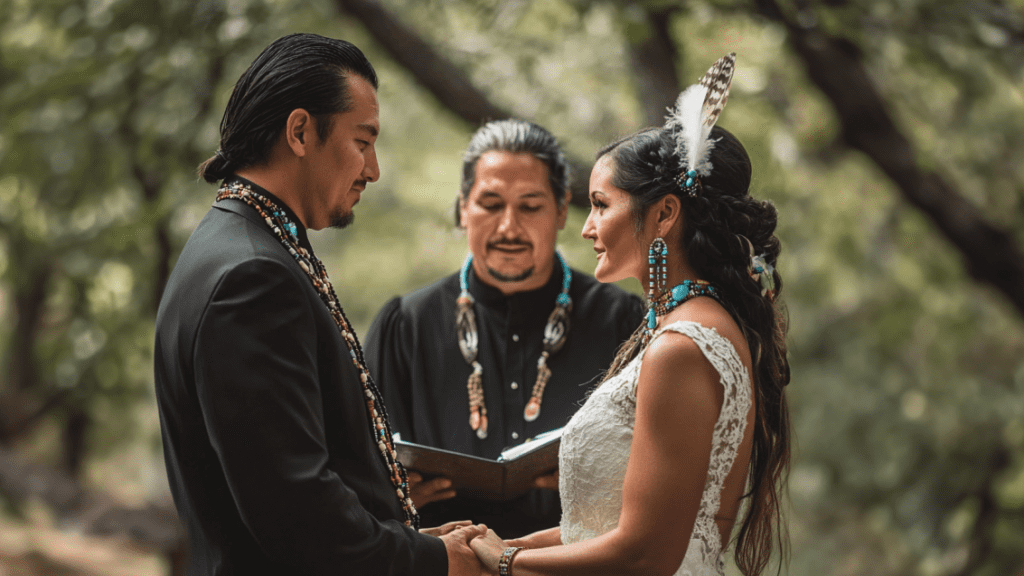
Turquoise: A Sacred Stone of Protection and Blessing
Turquoise holds a sacred place in many Native American cultures, symbolizing protection, life, and spiritual connection. Often referred to as the “stone of life,” turquoise has been used in jewelry for centuries, and it is particularly significant in Southwestern tribes, including the Navajo, Hopi, and Zuni peoples. For weddings, turquoise jewelry is worn by both the bride and groom, believed to bring blessings, prosperity, and protection to their union.
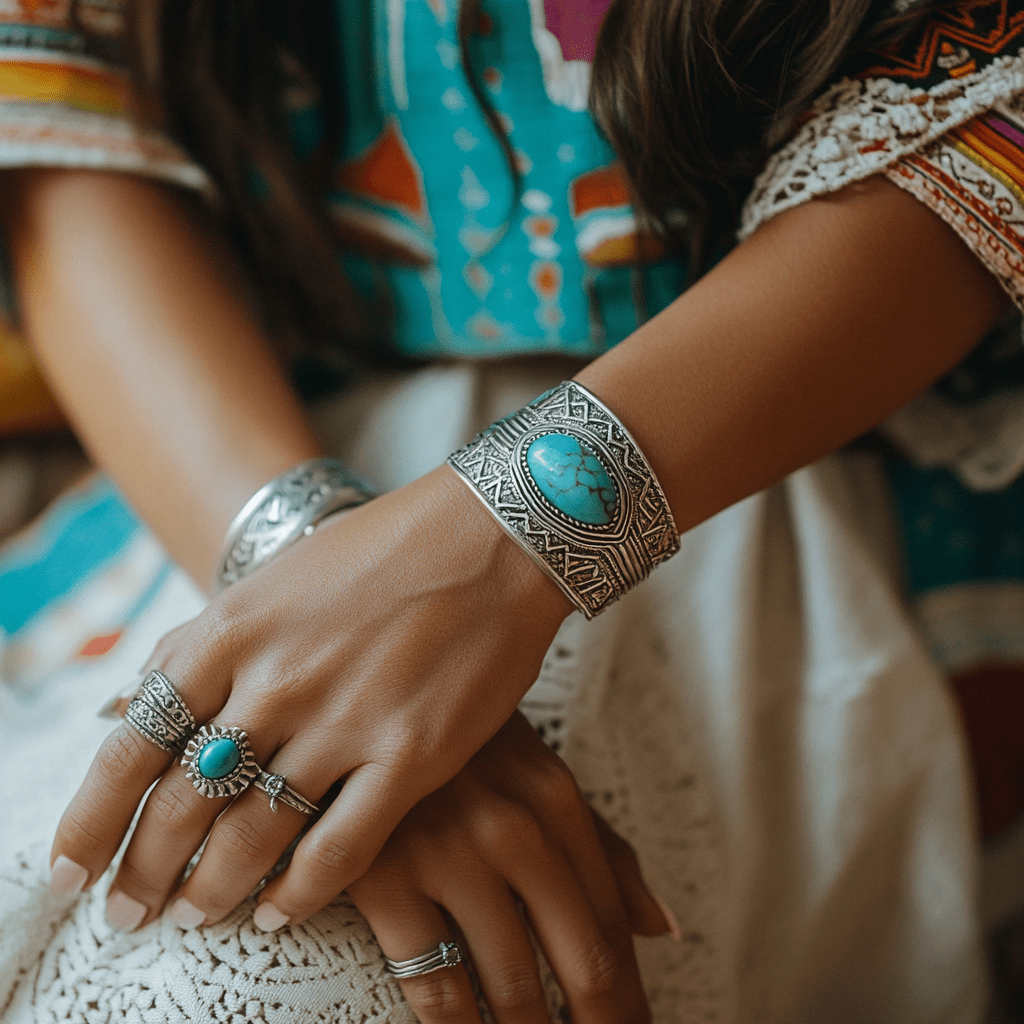

The blue-green hue of turquoise is said to represent the sky and water, elements essential to life and sustenance. Many Native American wedding necklaces, earrings, and rings feature turquoise set in silver or other metals. The bold, earthy tones are not only striking but also serve as a visual representation of the connection between the couple and the natural world around them.
Silver Jewelry: Cuffs, Concho Belts, and Symbolism
Silver is another metal deeply tied to Native American jewelry traditions, often used alongside turquoise to create breathtaking pieces. In many tribes, silverwork is a symbol of status and beauty, and it plays a prominent role in wedding adornments. Among the most cherished items are silver cuffs and concho belts, which are often passed down through generations as heirlooms.
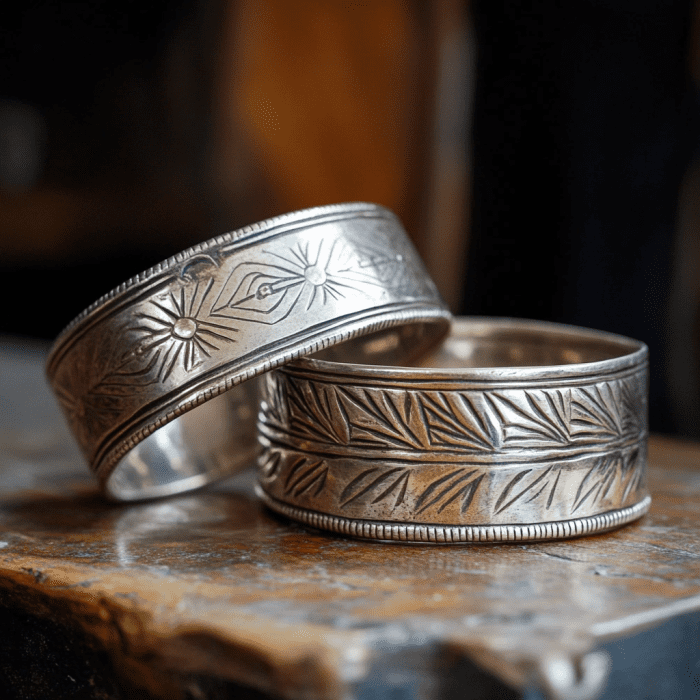
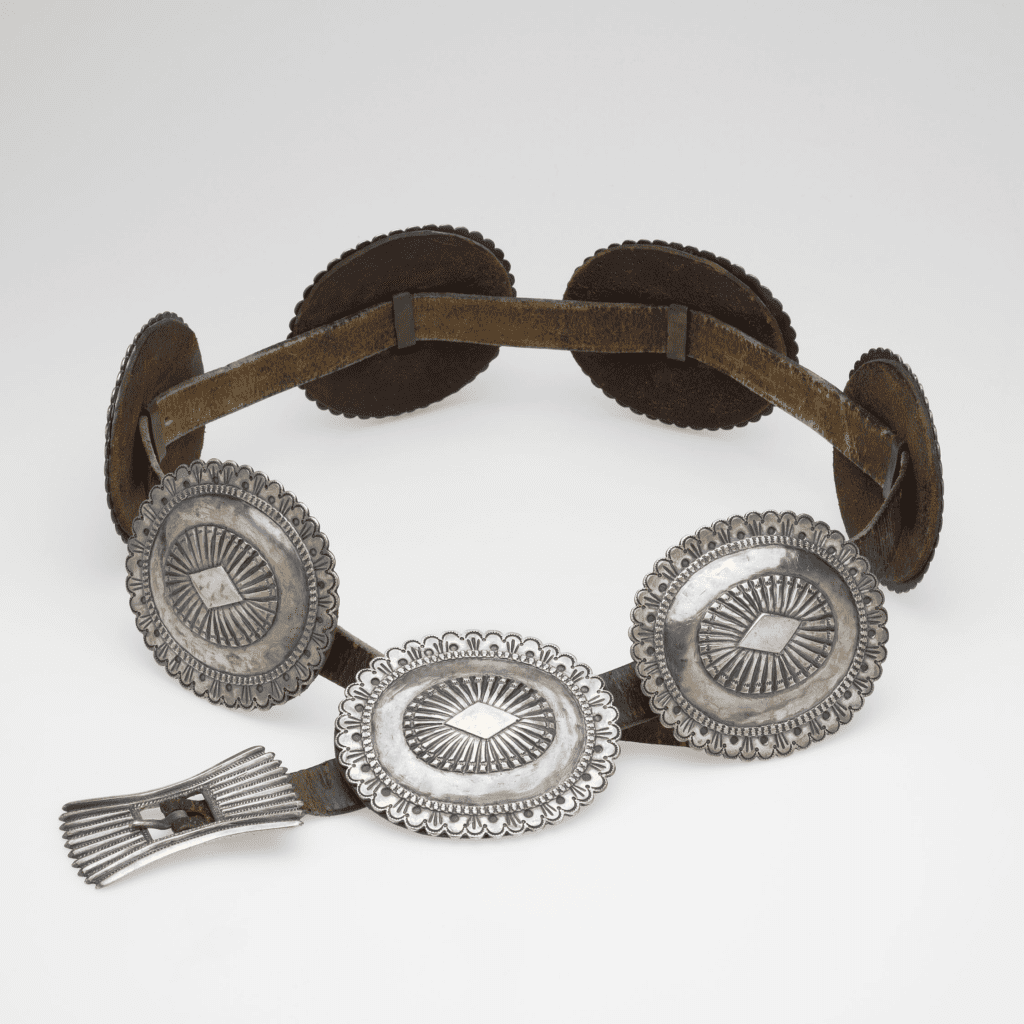
The Navajo, Hopi, and Zuni tribes are particularly known for their skilled silverwork. Silver cuffs, engraved with intricate patterns or set with turquoise, are worn during wedding ceremonies to represent strength and unity. Concho belts, adorned with silver medallions, are another beloved accessory, often featuring symbols that carry spiritual meaning. These pieces are more than decorative—they are a form of storytelling, preserving family history and cultural values.
Beadwork and Headdresses: Symbols of Unity and Tradition
Beadwork is one of the most intricate and cherished art forms in Native American culture, carrying deep meaning in wedding ceremonies. Tribes such as the Lakota, Sioux, and Cheyenne have long used beadwork to create stunning jewelry, including necklaces, bracelets, earrings, and even headdresses for both brides and grooms. Headdresses, often adorned with beads and feathers, are particularly significant, symbolizing honor, respect, and the couple’s connection to their heritage.

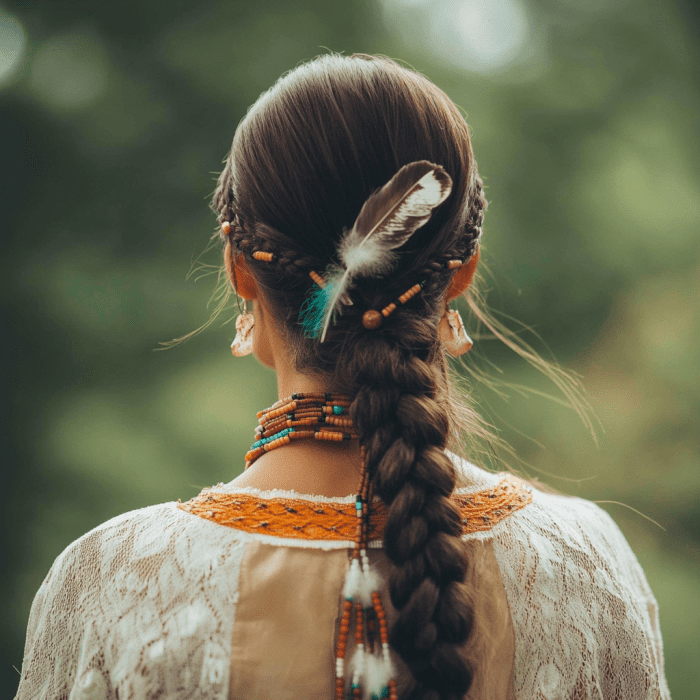
In Native American weddings, beadwork jewelry and headdresses represent unity and interconnectedness. Each bead, though small and individual, contributes to something much stronger and more beautiful—just like the bond between two people. The designs, ranging from traditional geometric patterns to more personalized motifs, allow couples to showcase their unique heritage and love story. Whether worn as jewelry or as part of a ceremonial headdress, beadwork plays a vital role in honoring tradition and celebrating the couple’s future together.
Coastal Tribes: Abalone Shells, Coral, and Turquoise
Along the coastal regions, Native American tribes such as the Chumash, Pomo, and Salish have developed distinct jewelry traditions incorporating materials from the ocean. Abalone shells, with their iridescent sheen, and coral are often mixed with turquoise to create pieces that reflect the natural beauty of the sea and sky. These materials are particularly popular in wedding jewelry, as they symbolize balance, harmony, and the couple’s connection to the earth and water.
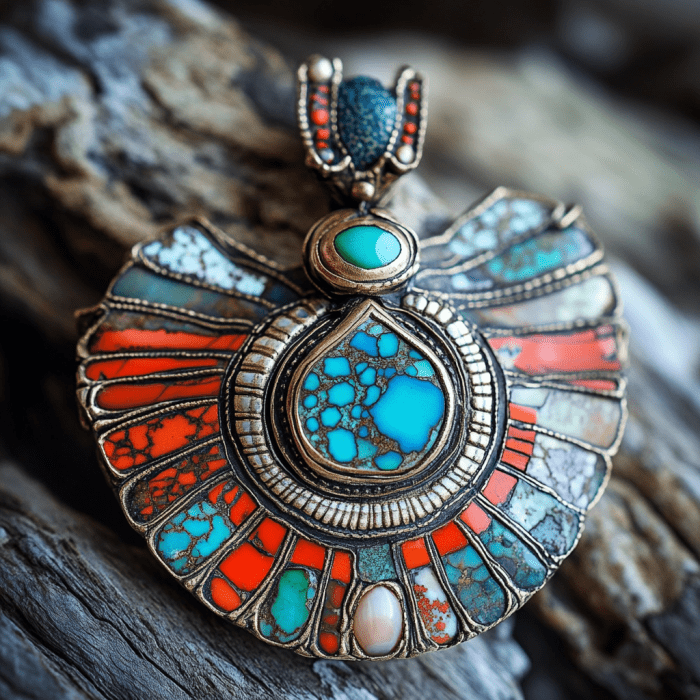
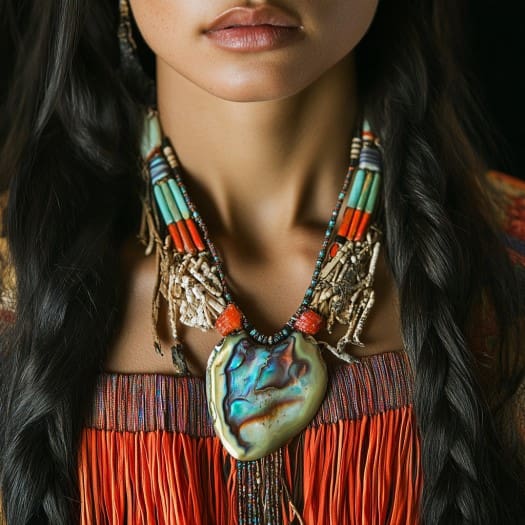
For many coastal tribes, wearing abalone and coral in wedding jewelry is not only a celebration of natural beauty but also a way of honoring ancestors and the earth’s resources. The use of these materials in necklaces, earrings, and bracelets highlights the importance of sustainability and respect for the natural world—a core value in many Native American cultures. Mixed with turquoise, these pieces become powerful symbols of unity and love in wedding ceremonies, blending land and sea in one beautiful expression of commitment.
Celebrating Native American Bridal Jewelry
Traditional Native American wedding jewelry is more than just a display of beauty; it is a reflection of centuries-old customs, rich symbolism, and cultural heritage. These timeless traditions continue to be cherished by modern brides, preserving the cultural significance of these exquisite pieces for generations to come. While you’re still here, if you have a jewelry piece that needs a repair, you can be sure to trust it to the hands of our Master Craftsmen right here at My Jewelry Repair

Check Out the Magic of Our Jewelry Services!
Resources:
- Native American Wedding Customs Part 1: https://indiantraders.com/
- Native American Wedding Traditions: How to stay True to the Culture: https://www.weddingdetails.com/
- Blog outline and revising assisted by AI resources such as Google Gemini.
